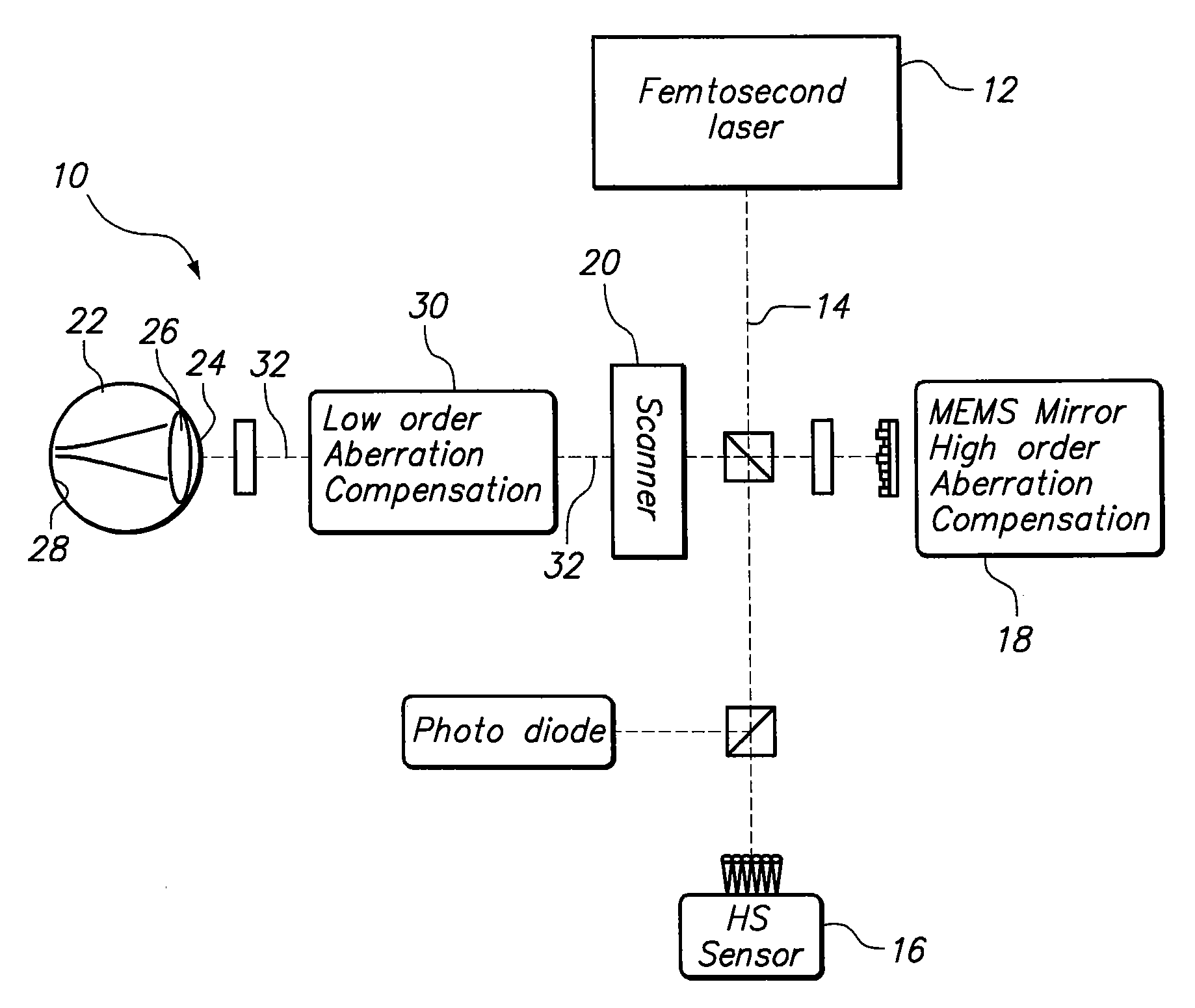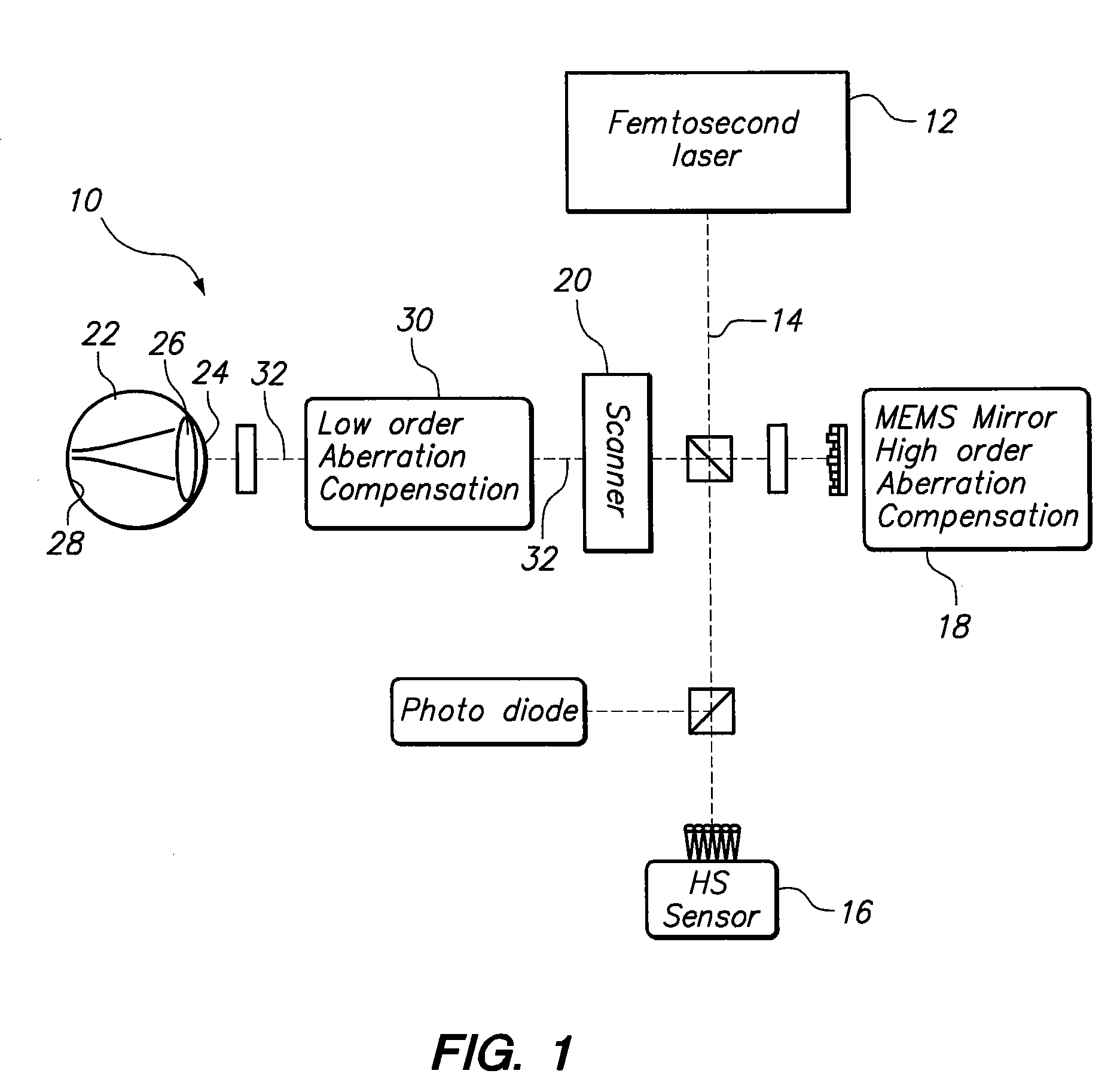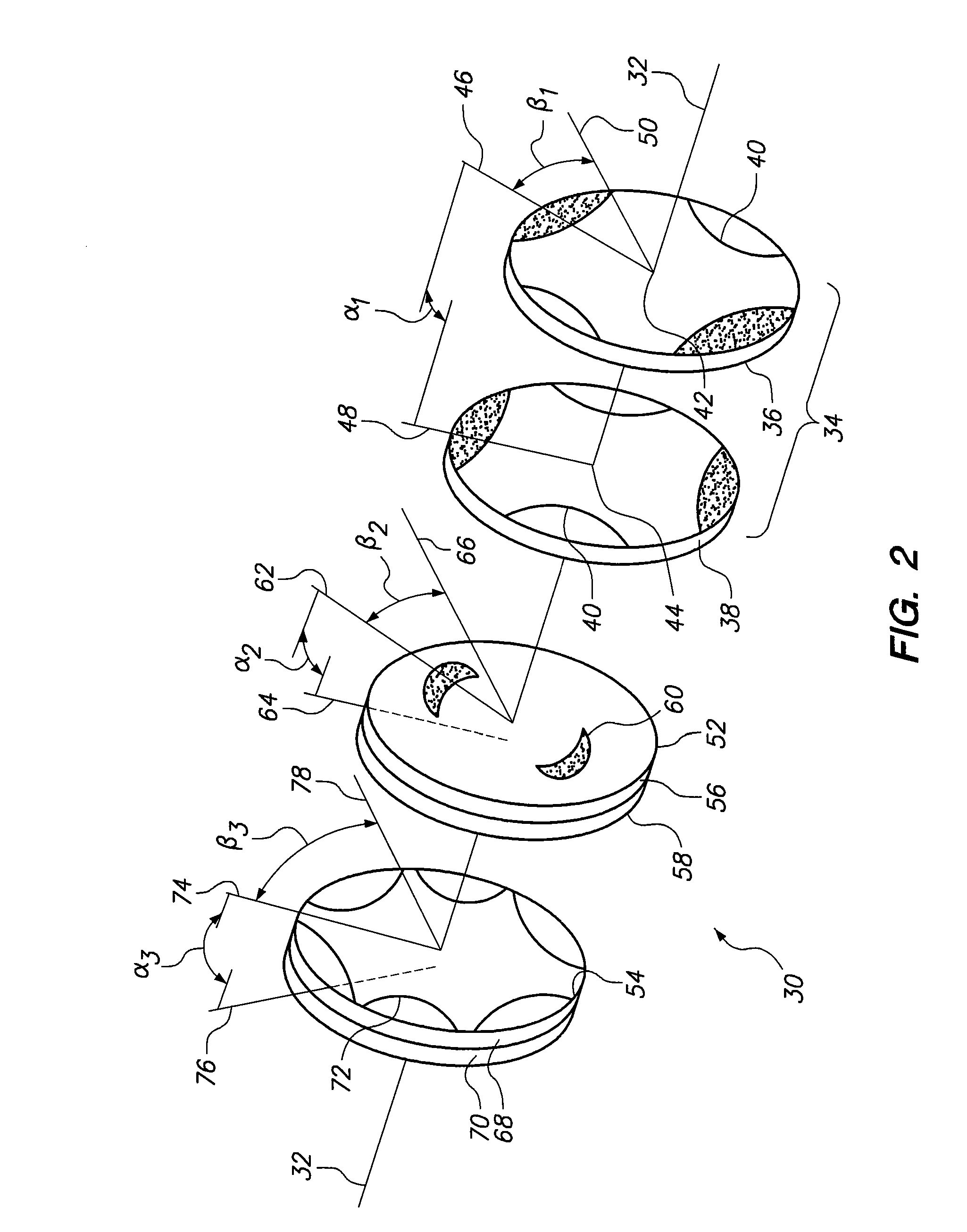Adaptive optics for compensating for optical aberrations in an imaging process
a technology of adaptive optics and imaging process, applied in optics, othalmoscopes, medical science, etc., can solve the problems of so-called lower order aberration, additional asymmetrical aberration, and significant damage, and achieve the effect of reducing the compensation burden
- Summary
- Abstract
- Description
- Claims
- Application Information
AI Technical Summary
Benefits of technology
Problems solved by technology
Method used
Image
Examples
Embodiment Construction
[0021]Referring initially to FIG. 1, an optical system for incorporating the present invention is shown and generally designated 10. As shown, the system 10 includes a laser source 12 for generating a laser beam 14. Through electronic connections, not shown in FIG. 1, this laser beam 14 is then monitored by a sensor 16 (preferably a Hartmann Shack type sensor), it is also refined by a MEMS mirror 18 that removes certain aberrations from the laser beam 14, and it is controlled by a scanner 20. More specifically, the scanner 20 can be preprogrammed to direct the laser beam 14 toward an eye 22 for various purposes. Specifically, the eye 22 has a cornea 24, a lens 26 and a retina 28 that can be imaged or be operated on by a surgical laser beam 14. FIG. 1 also shows that a compensation device 30 is positioned between the scanner 20 and the eye 22, and that the laser beam 14 will pass through the compensation device 30 along a beam path axis 32.
[0022]Referring now to FIG. 2 it will be see...
PUM
 Login to View More
Login to View More Abstract
Description
Claims
Application Information
 Login to View More
Login to View More - R&D
- Intellectual Property
- Life Sciences
- Materials
- Tech Scout
- Unparalleled Data Quality
- Higher Quality Content
- 60% Fewer Hallucinations
Browse by: Latest US Patents, China's latest patents, Technical Efficacy Thesaurus, Application Domain, Technology Topic, Popular Technical Reports.
© 2025 PatSnap. All rights reserved.Legal|Privacy policy|Modern Slavery Act Transparency Statement|Sitemap|About US| Contact US: help@patsnap.com



